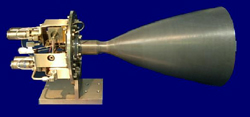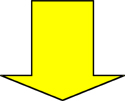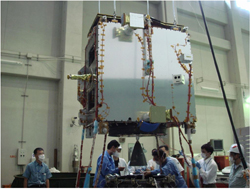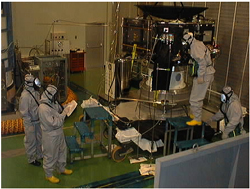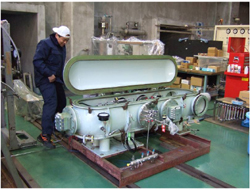1. Chemical Propulsion of Spacecraft
Chemical propulsion of spacecraft is categorized into 3;
- bi-propellant system
- mono-propellant system
- cold gas jet system
In general, bi-propellant system has higher efficiency (specific impulse), but the heavier dry weight at the same time. So, the choice of propellant categories depends on the requirement of each mission.
2. Study on Ceramics Thruster
Ceramic thruster is studied to enhance the performance of bi-propellant thruster. Ceramic has higher heat resistance. Our study spans from numerical analysis to firing test, mechanical environment test, and particle impact test. Now, our ceramic thruster is on board the mechanical test model of Venus Explorer PLANET-C.
|
|
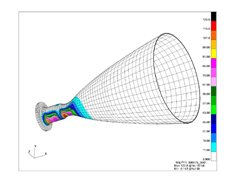 |
Overview of Ceramic Thruster |
Ceramic Thruster at Firing Test |
Numerical Analysis |
|
|
|
| |
|
|
Ceramic thruster installed to Mechanical Test Model of Venus Explorer PLANET-C
|
3. Study on Low Toxicity Propellant
We study HAN (Hydroxyl ammonium nitrate) based low toxicity propellant as next generation mono-propellant. Our originally blended HAN solution has achieved performance improvement of 10% and low toxicity simultaneously.
|
VS |
|
Operation of coventional propellant |
|
Operation of HAN solution |
4. Contribution to Project
Uesugi lab. (our antecedent Lab.) and our lab. have developed almost all propulsion subsystem of Japanese scientific satellite. We continue to contribute to Scientific Satellite projects by charging development of propulsion subsytem.
[<<] [back] [>>]
|
